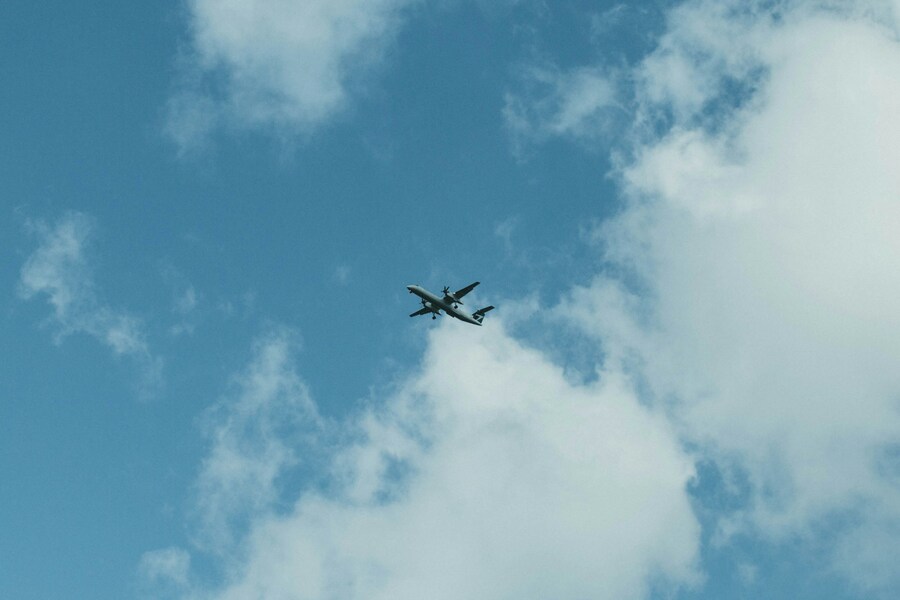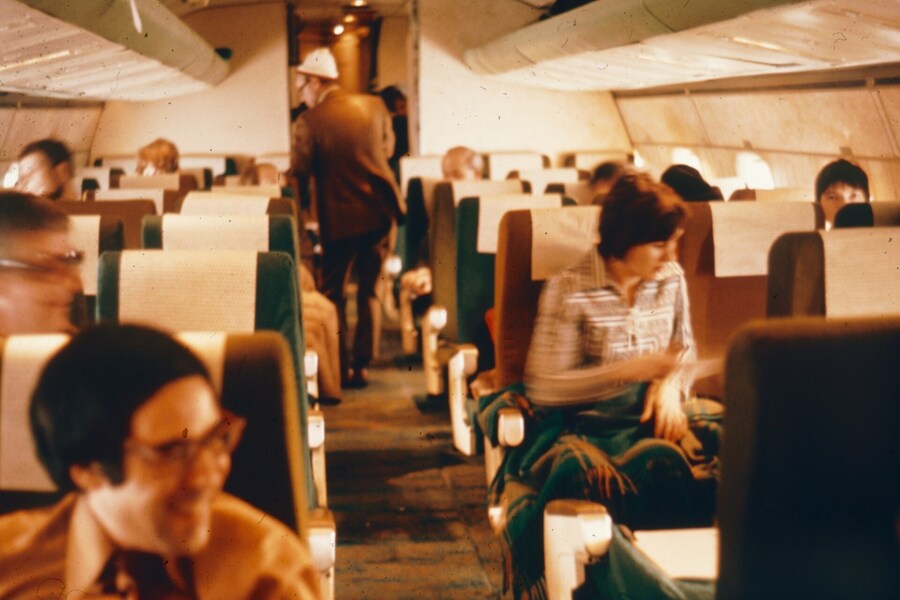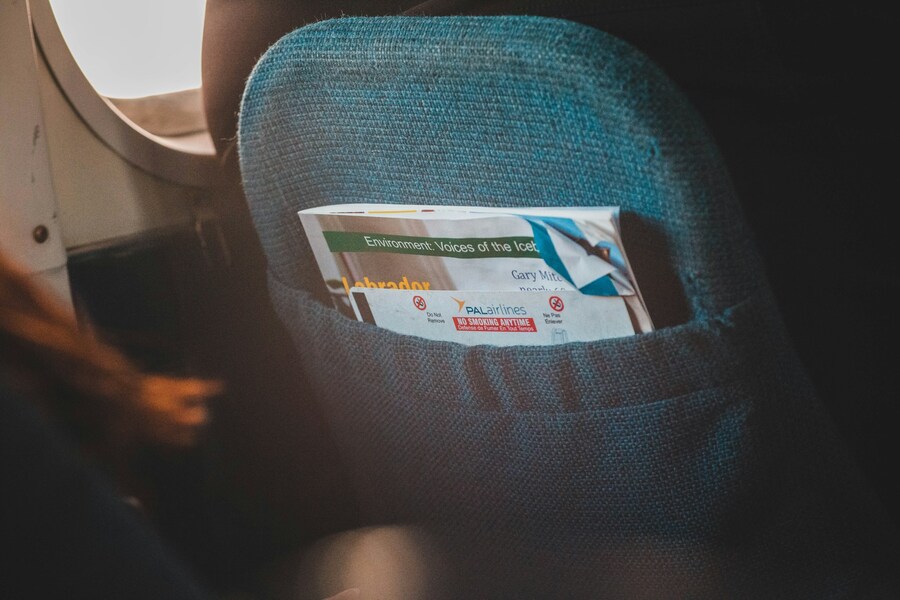When you book a flight, you often spend time carefully selecting a seat that you believe will provide the most comfortable experience. Maybe you prefer the extra legroom of an aisle seat, the scenic view from a window, or the convenience of being near the lavatory. You might even pay a premium to secure a specific spot. However, sometimes the best-laid plans go awry. You might find yourself in a different seat than you expected, or perhaps you're separated from a travel companion. Whatever the reason, you're faced with a common travel dilemma: should you ask to switch seats?
This can feel like a high-stakes situation. You don't want to inconvenience anyone or create an awkward atmosphere. Navigating this can be tricky, but with the right approach and an understanding of proper etiquette, you can increase your chances of a successful swap and maintain a smooth journey for everyone on board. So, let's cut to the chase!
So, is it ever truly acceptable to ask for a new seat, or is it better to just stay put?
The world of air travel is filled with unwritten rules, and understanding them is key to a stress-free experience. When it comes to swapping seats, it's a common occurrence that can be handled with grace and politeness. By being prepared, you can turn a potentially uncomfortable situation into a seamless one.

Source: Jonathan Cooper/Unsplash
The etiquette of the seat swap: is it really okay?
Many people wonder if it's even acceptable to ask to switch seats. The short answer is yes, it is. As travel experts and etiquette professionals often point out, there's no harm in asking a polite question. The key, however, lies in your readiness to accept a "no" gracefully. Air travel can be an unpredictable and often stressful environment. Passengers may be tired, anxious, or simply in a hurry to get to their destination. The flight crew is busy, and their primary focus is on safety and efficiency. Approaching a seat swap with this in mind will set you up for success.
Sometimes, a seat change is more than a simple preference; it's a necessity. You might need to be seated with a young child, or perhaps you have a medical condition that requires a specific seat type. In these situations, the request is often met with more understanding and a higher likelihood of success. The main thing is to always be prepared for a refusal. A "no" isn't a personal rejection; it's simply a passenger or crew member making a decision based on their own needs or the operational demands of the flight. Maintaining a friendly demeanor, regardless of the outcome, is the most important part of the interaction.
When considering a seat swap, it's worth reflecting on why you or the other passenger might be in your respective seats. Perhaps the other person has a fear of flying and specifically chose a window seat to feel more secure. Or maybe they are recovering from a long day of travel and simply want to sit in the seat they paid for. Everyone has a reason for their choices, and respecting that is paramount. This level of empathy will guide your approach and help ensure a positive outcome.
The art of asking a fellow passenger to switch seats
Engaging directly with a fellow passenger about a seat swap requires a diplomatic and thoughtful approach. Many travelers put significant time, and often money, into selecting their ideal seat. They might have a specific reason for their choice, such as needing an aisle seat for easy access to the lavatory or a window seat to rest against. The premium they pay for extra legroom or a seat closer to the front of the plane is a deliberate investment in their comfort.
With this in mind, the golden rule of asking for a seat swap is to offer a fair trade – or better. Avoid asking someone in a desirable premium economy aisle seat to move to a standard middle seat at the back of the plane. This is an unfair exchange and is highly likely to be rejected. Instead, if you're in a middle seat and want to sit next to your child in a window seat, consider offering your aisle seat in a different row. This is a more equitable swap and shows that you respect the other person's comfort.
When you make the request, keep your tone kind and casual. Start with a simple "Excuse me, I know this is a long shot, but would you be willing to switch seats?" You can briefly explain your reason – for example, "I'm hoping to sit next to my child" or "I need to be closer to my travel partner." Be prepared to offer the specifics of your seat, such as "My seat is 22D, an aisle seat, and I'd be happy to trade it for your middle seat, 21E." This direct and transparent approach builds trust and makes the other person feel more comfortable considering your request.
If you're on the receiving end of a seat swap request and don't feel comfortable saying yes, a simple and polite "No, thank you, I prefer this seat" is a perfectly acceptable response. You are under no obligation to provide a detailed explanation. If you feel it's necessary, you can briefly mention that you specifically booked or paid for that particular seat. A firm but courteous refusal is a lot better than a reluctant or resentful agreement. Remember, the goal is to make the journey pleasant for everyone, and that includes you.

Source: Annie Spratt/Unsplash
When to bring a flight attendant into the equation
If the idea of negotiating a seat swap directly with a fellow passenger makes you feel anxious, or if your reason for the switch is a necessity rather than a preference, it's best to involve a flight attendant. They are trained professionals who can help navigate these situations.
Flight attendants appreciate it when you speak with them before making any moves, even if there appears to be an empty seat. There are several important reasons for this. First, they are responsible for the cabin's weight and balance, and a sudden shift in passengers can affect this. Second, they have to manage seating assignments, especially in case of last-minute changes or standby passengers. Finally, they need to know where everyone is seated for safety and accountability, particularly during an emergency.
If your reason for a seat switch is valid – such as needing to be with a young child, requiring more space for a medical reason, or needing to be closer to a lavatory due to a health condition – they can often assist. Explain your situation calmly and politely. Avoid sounding demanding or entitled. They have a multitude of other responsibilities during boarding and in-flight, so patience is key.
Another reason to involve a flight attendant is to manage a situation that could become awkward. For instance, if you've already asked a passenger who refused and you feel uncomfortable asking someone else, the flight attendant can act as a third-party mediator. This can help de-escalate any potential tension and maintain a friendly environment for everyone on the plane. A simple "I know you're busy, but I was hoping to switch seats to be with my travel partner; is there any way you could help?" is a great way to start the conversation. They'll appreciate your politeness and proactive approach.
The pro-tip: engage the gate agent first
The best time to resolve a seating issue is before you even step on the plane. Once the aircraft is fully boarded and the doors are closed, a seat swap becomes much more complicated. This is where the gate agent becomes your best friend. They are the last line of defense before the flight takes off, and they have access to the most current and accurate seating charts.
Gate agents are responsible for assigning seats to standby passengers and managing last-minute changes. If you arrive at the gate with a seating dilemma, approach them before boarding begins. Politely explain your situation and ask if there's any way they can help. They can see the full seat map and might be able to shuffle things around to accommodate you without needing to involve other passengers or the busy flight crew.
For example, if you're a couple separated by a single seat in an otherwise full row, the gate agent might be able to find a solo passenger who's willing to move to your other seat. This kind of creative problem-solving is easier to do on the ground than in the air. While they can't always work miracles, they have far more flexibility than anyone on the plane once boarding has started. A request like "Hello, my travel partner and I were seated in different rows; is there any way we can be moved to sit together?" is a good way to start.
Being proactive and arriving at the gate early can make all the difference. While you're at the airport, you might also be thinking about other travel logistics, like where to park. For those who need to arrange long-term parking near airport terminals, a service like ours – ParkingNearAirports.io – can be a lifesaver. Booking airport parking reservations in advance can save you a lot of hassle, and you can often find great parking discounts, making the start of your trip much smoother.
Even if the gate agent can't solve your dilemma, they might be able to give the flight attendant a heads-up about your request. This proactive communication is always appreciated and can set the stage for a more understanding and helpful response from the flight crew once you're on board. By taking this step, you show that you've thought about the situation and are trying to make it easier for everyone involved.

Source: Erik Mclean/Unsplash
Final thoughts
Mastering the art of the airplane seat swap comes down to a few key principles: empathy, politeness, and preparation. By understanding that other travelers have their own reasons for their seat choices, you can approach the situation with more grace. A simple, respectful request is always the right way to start. Remember to be prepared for any answer – a "yes" is a bonus, and a "no" is just a part of the game.
The best-case scenario is to address any seating issues before you get on the plane by speaking with a gate agent. If that's not possible, approaching a fellow passenger with a fair trade or seeking the assistance of a flight attendant are your next best options. No matter how you handle it, patience and a positive attitude are your most valuable assets. These simple courtesies make the journey safer and more comfortable for everyone, proving that a little empathy goes a long way in the air. Ultimately, every successful seat swap is a testament to the fact that with a bit of kindness and forethought, even the most awkward travel situations can be resolved with ease. Safe travels and happy flying!






